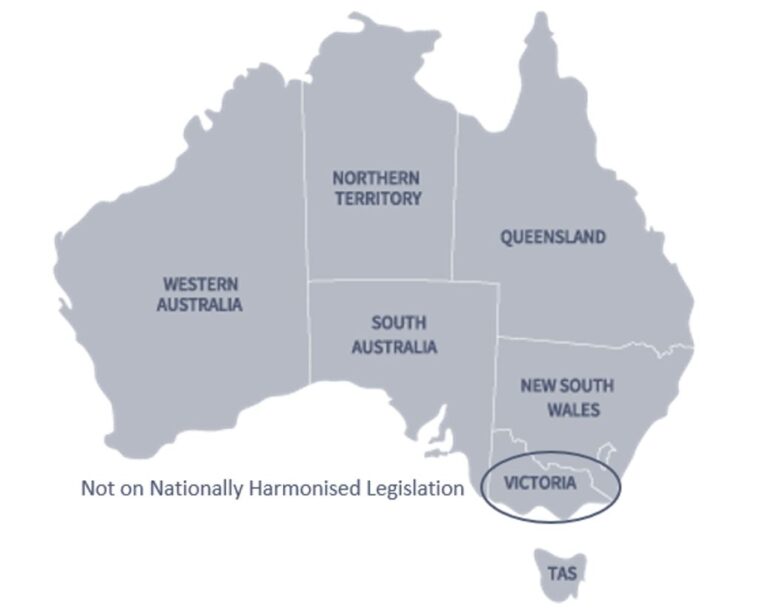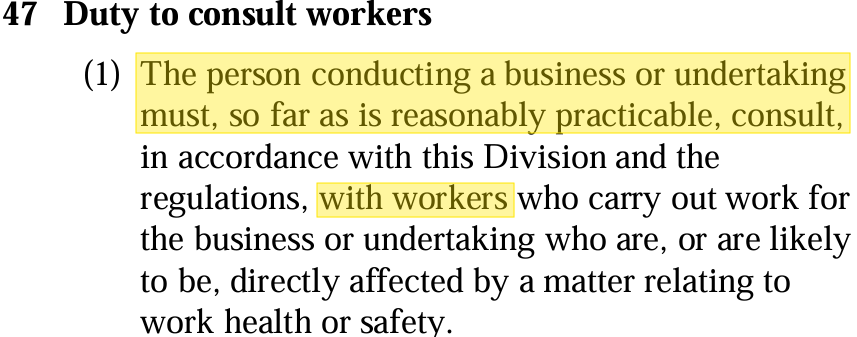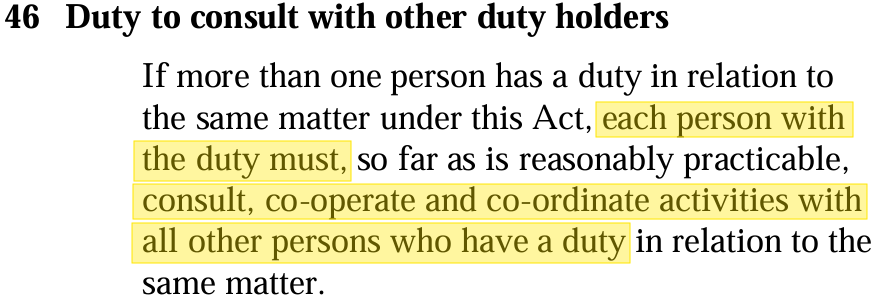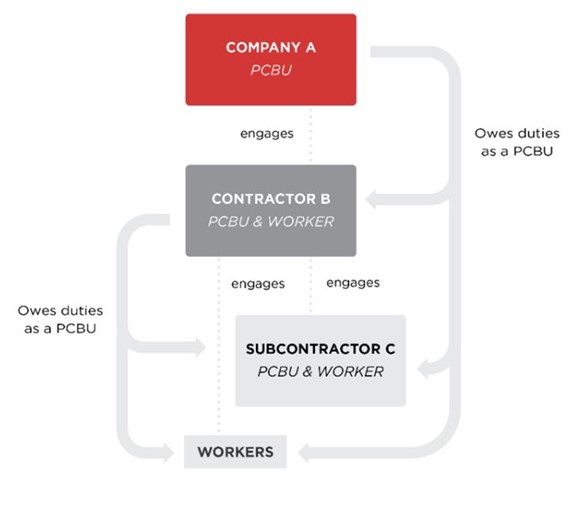WHS Consultation Requirements in Australia
Work health and safety (WHS) consultation is a vital part of ensuring workplace safety. Consultation is essentially communicating (e.g. talking!) to assist with:
- Coordinating activities
- Managing WHS hazards
- Designating responsibilities
- Sharing opinions and seeking feedback from workers
Consultation involves workers and other duty holders in the decision making and risk management process.
The Legal Framework for WHS Consultation in Australia
WHS consultation is a legal requirement outlined in the WHS Act:
- Section 46 covers the obligations of PCBUs to consult with other duty holders while.
- Section 47 covers the requirements for PCBUs to consult with workers they engage AND workers who may be affected by the PCBUs activities.
WHS Consultation under the Harmonized Act
In Australia, each state has its own WHS laws. All states except Victoria are currently on the “Harmonised Model Legislation” published by Safe Work Australia. To be sure you are complying with the relevant laws in your state, access the legislation relevant to your jurisdiction.

WHS Consultation with Workers (s47 Act)

We’ll start with section 47, as this type of consultation is easier to understand. In essence, PCBUs must consult with workers on safety matters. This is crucial for improving WHS performance as workers are the ones exposed to the hazards and they often know the work environment and processes better than anyone. By involving workers in decision making, issue resolution, and risk assessments, businesses can optimise their safety performance.
Nature of WHS Consultation
Consultation isn’t a one-way street. It is a 2-way flow of information and vitally, gives workers an opportunity to contribute to the decision-making process. If a PCBU were to simply tell workers about a decision that has been made, that is NOT consultation. To be considered consultation, the following must take place:
- Workers be given reasonable opportunity to express their views, raise concerns and contribute to decision-making
- The views of workers must be taken into consideration by the PCBU
- The workers must be advised of any decision-making outcomes
- HSRs must be involved in the consultation (if elected)
When is WHS Consultation Required?
The Act tells us when this is required. As you may have guessed, it is required whenever a safety matter exists, for example:
- When identifying workplace hazards and risks
- When making decisions on how to control risks
- When making decisions on the adequacy of facilities (e.g. toilets or crib facilities)
- When proposing changes to the workplace that affects workplace safety
- When making WHS procedures
Identifying Hazards and Controlling Risks
Involving workers in the hazard identification and risk control process is an obvious way to ensure hazards are effectively identified and risks controlled. After all, who knows the workplace and its hazards better than the workers? The answer is obvious, no one. In many cases workers will know more about the hazards and effectiveness of controls than their managers or PCBU. Also, on a moral level, the workers will suffer most from a lack of WHS so obviously their input should be sought after.
WHS Consultation with Other Duty Holders (s46 Act)
Section 46 is a little harder to understand, but bear with us… You’ll be an expert in no time! Lets consider the following situation. A worker is engaged by a subcontractor (PCBU) to perform work on a building site under the control of a principal contractor (PCBU). The WHS Act s(19) states that PCBUs are responsible for workers engaged by them. In this case, the worker is engaged by both the subcontractor AND principal contractor. This is a “shared duty”, and each party must discharge their duty to the extent that they have influence or control over the situation (s16 Act). In relation to the shared duty, s46 requires PCBUs to consult, cooperate and coordinate to ensure the duty is met.

Who are Other Duty Holders?
Other duty holders are typically PCBUs that employ people in a contractual chain or PCBUs that share a workplace. Some examples of other duty holders are:
- A PCBU that engages another PCBU’s workers to complete works (e.g. principal / subcontractor contractual chain)
- PCBUs that share a workplace (e.g. multiple contractors working in the same area)
- A PCBU with management or control of a workplace engaging another PCBU to complete works (e.g. a building management company engaging a contracting PCBU to complete maintenance works)
Workers may be shared duty holders as well. Consider a situation where 2 or more workers are completing working at heights. They all share the duty to take care of others (s28 Act) – for example if they do not implement a drop zone beneath them and someone is injured, this could be a breach of the shared duty and they should coordinate activities to ensure the safety of workers.

Why Consult with Other Duty Holders?
Multiple PCBUs engaging (or affecting) the same workers creates a complex operating environment. Managing the safety risks presented to these personnel requires effective communication and cooperation between the PCBUs. Involving other PCBUs can bring extra perspectives, expertise, and resources to consultation arrangements, enhancing decision making, risk management and safety procedures.
Examples of WHS Consultation
Now that we know why consultation is required, the next questions is “How do we consult?”. There are a variety of ways to consult with workers and other duty holders. Some examples include:
- Consultation with Workers:
- Pre-Start Safety Meetings
- Team Meetings or Tool Box Talks
- WHS Alerts
- Health and Safety Reps and Health and Safety Committees
- Consultation with Other Duty Holders:
- Contractor Pre-Qualifications
- Contracts or Specifications
- Simultaneous Operations (SIMOPS) Meetings
What Do the Regulations Say?
In short, not much. The regulations do detail some requirements for Health and Safety Representatives (HSRs) as well as WHS consultation requirements for Major Hazard Facilities, however there is no further guidance or requirements for general WHS consultation with either workers or other duty holders. For more information on WHS consultation, you should refer to the code of practice “Work health and safety consultation, cooperation and coordination”.
FAQs
What is WHS Consultation?
WHS consultation involves engaging with workers and other duty holders to manage health and safety risks in the workplace. It’s both essential for safety and a legal requirement1.
Who Must Consult?
PCBUs (Persons Conducting a Business or Undertaking) must consult with:
-
- Workers
- Health and safety representatives (HSRs)
- Other PCBUs they share duties with (e.g., businesses they work with or share premises with)1.
When Should Consultation Occur?
PCBUs must consult when:
-
- Identifying WHS hazards and assessing risks
- Proposing changes that affect workers’ health and safety
- Developing work procedures
- Deciding on necessary facilities (e.g., toilets, first aid)1.
Why Is Consultation Important?
Consultation assists in identifying and managing hazards, ensure legal compliance and helps workers and PCBUs better clarify WHS responsibilities.
How Does Consultation Happen?
There is no fixed method and consultation can be informal discussions or formal processes. Regular meetings with workers (e.g. pre-start meetings or toolbox talks are common methods).
Articles and Further Reading
- Contractor Management Procedures for the Australian Workplace (Spire Safety) <https://spiresafety.com.au/resources/contractor-management-procedures-for-the-australian-workplace/>
- Key WHS Requirements for Construction Site Safety (Spire Safety) <https://spiresafety.com.au/resources/requirements-construction-site-safety/>
- WHS duties – Consultation (Safe Work Australia) <https://www.safeworkaustralia.gov.au/safety-topic/managing-health-and-safety/consultation/whs-duties-consultation>
